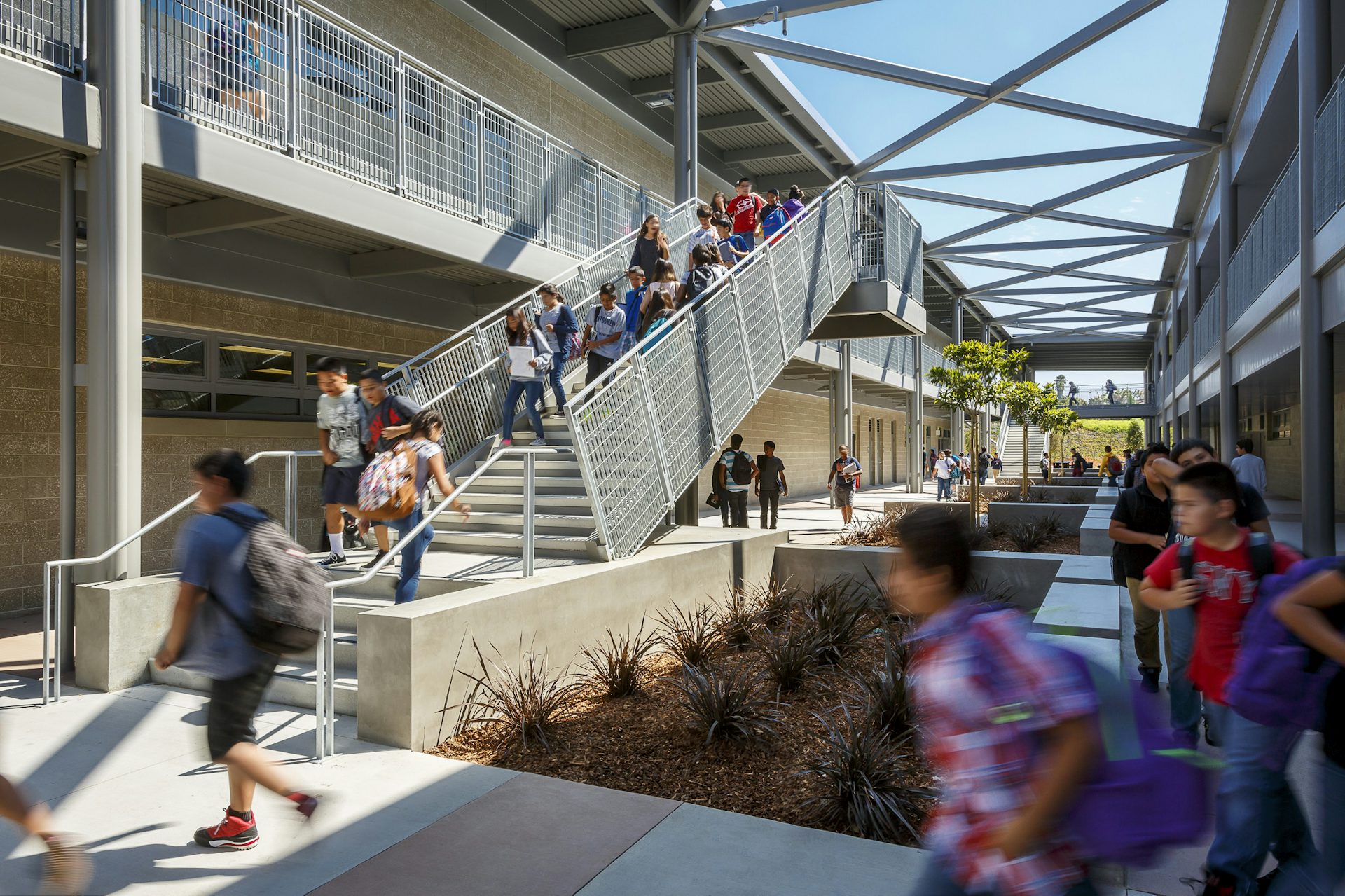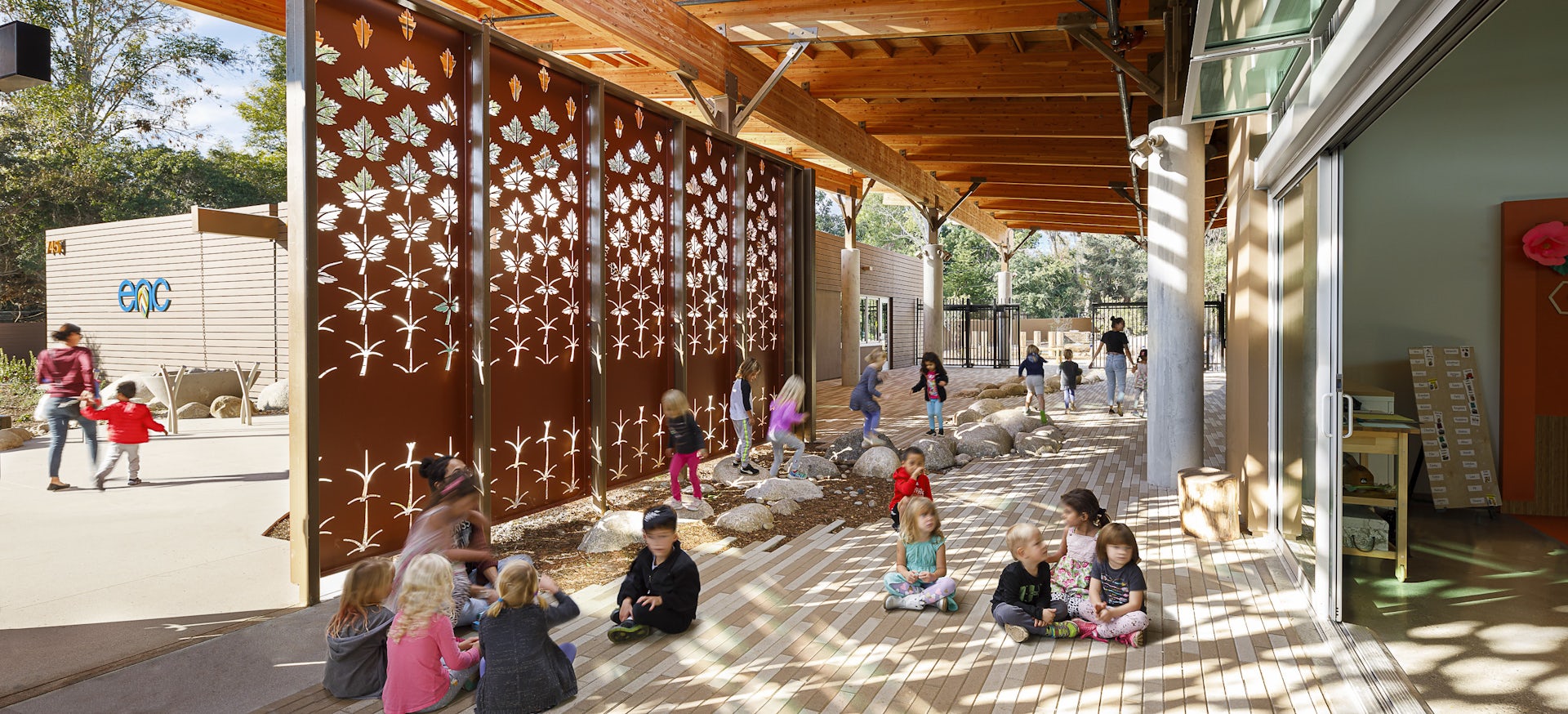Climate change and the current crisis are an opportunity for a profound, systemic shift to a more sustainable society. Momentum is building for public school districts to develop net zero energy (NZE) facilities—a big step in reducing the carbon emissions in communities. Yet there are still lingering misconceptions about what it takes for schools to achieve the goal.
At the onset of a project, we often find ourselves clarifying to clients that net zero is, in fact, possible, even within the strict budgets of a public school district. The common assumption or reaction is that it’s going to be more expensive, complicated, or difficult to maintain and operate, which doesn’t have to be the case. Even modernizations have increased in importance, as embodied carbon has become a key factor to consider in construction. These project types have a huge upside for energy performance improvements to meet current sustainability targets and better support learning outcomes.
GB&D: Tapia on the Path to Net Zero K-12 Schools

But it’s still a big leap for district leaders, who are stewards of taxpayer money and remain laser-focused on their primary mission to support students to fulfill their potential. For many it’s a complex discussion, touching on everything from construction budgets to community priorities. Even the term “net zero” is confusing and used in different ways. (In most cases, net zero energy refers to a highly energy-efficient building with output from onsite renewable energy sources equal to overall annual energy consumption.)
For many districts the process toward net zero starts with a holistic understanding of the life of a facility, taking a much broader and long-term approach, including initial costs, return on investment, maintenance, and performance over the life of a facility.
...














